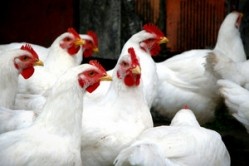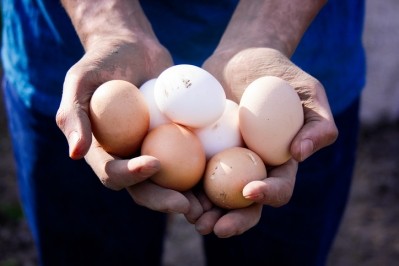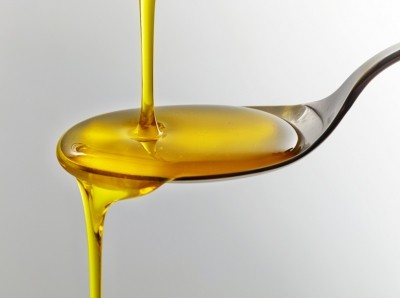Enzyme package may boost value of emerging chicken feedstock

A team from the University of Alberta and Canadian Bio-Systems recently tested the use of a multi-carbohydrase additive on cold-pressed camelina cake (CPCC) when fed to young broiler chickens and found the combination could provide an increase in the standardized ileal digestbilitiy (SID) of several major amino acids, including methionine, threonine and tryptophan.
The enzymes used also boosted the apparent metabolizable energy (ME) and N-corrected value of the diet.
The researchers presented their research at the 2015 Poultry Science Association (PSA) annual meeting in Kentucky in July.
“Camelina is not a well-known or well-grown oil seed, but it’s growing in popularity as the oil from the seed has a really high nutritional value, more so than flax and more so than canola,” Rob Patterson, technical services managers with Canadian Bio-Systems, told FeedNavigator. “It’s being grown more, and if you look at the oil itself, it’s been positioned as a sustainable stock for chemical refining in plastics and jet fuel.”
Regulatory status
Earlier this year Canadian approval was granted for feeding cold-pressed non-solvent extracted camelina meal to broiler chickens at up to 12% inclusion levels, and approval for use in layer feed is also being considered.
Similarly, the US Food and Drug Administration (FDA) has expressed ‘no objection’ to feeding camelina meal to broiler chickens and laying hens up to 10% of their final diet.
Fiber challenges
Patterson said CPCC is fiber rich, but chickens do not digest fiber well so adding the supplemental fiber degrading enzymes demonstrated the potential of the feed with lower fiber content.
On a dry matter basis, CPCC contains 39.8% crude protein, 1.89% lysine, .7% methionine, 1.56% threonine, .45% tryptophan, 12.7% ether extract, and 38.3% neutral detergent fiber.
Study details
The goal of the work was to examine the standardized ileal digestibility (SID) of amino acids and the nitrogen corrected apparent metabolizable energy (AMEn) value of the camelina cake for use in broiler feed when combined with a multi-carbohydrase enzyme additive, said the researchers.
For the study, 600 young broiler chickens were divided into 40 groups and were fed one of five diets in a randomized design with eight groups per diet for a period of seven days. The variations were a corn-based basal diet with no additive, that diet with 30% CPCC and both with or without the supplemental enzyme package.
An N-free diet also was used to estimate basal endogenous amino acid losses to help determine the SID of the amino acids.
Birds received the designated diet from day 15 to 21 post hatching and excreta were sampled on days 19 and 20, additionally, Ileal digesta were sampled on day 21.
Study results
Reportedly, the AMEn values for the CPCC were 1,533 kcal/kg of dry matter; however with the addition of the multi-carbohydrase that increased to 2,072 kcal/kg of dry matter. The supplement also boosted the SID of the amino acids methionine, threonine and tryptophan.
Researchers concluded that the camelina cake was a good source of energy and amino acids and can be included in poultry diets for those reasons. The addition of the multi-carbohydrase supplement promoted increased dietary energy digestibility and the AMEn value.
“This is a classic response to the enzymes that we used,” said Patterson.
What’s next
From this point, the team is considering a similar study using laying hens instead of broiler chickens, said Patterson. An additional point of inquiry will be to start doing performance trials using the CPCC and the CPCC with the added multi-carbohydrase, he said.








